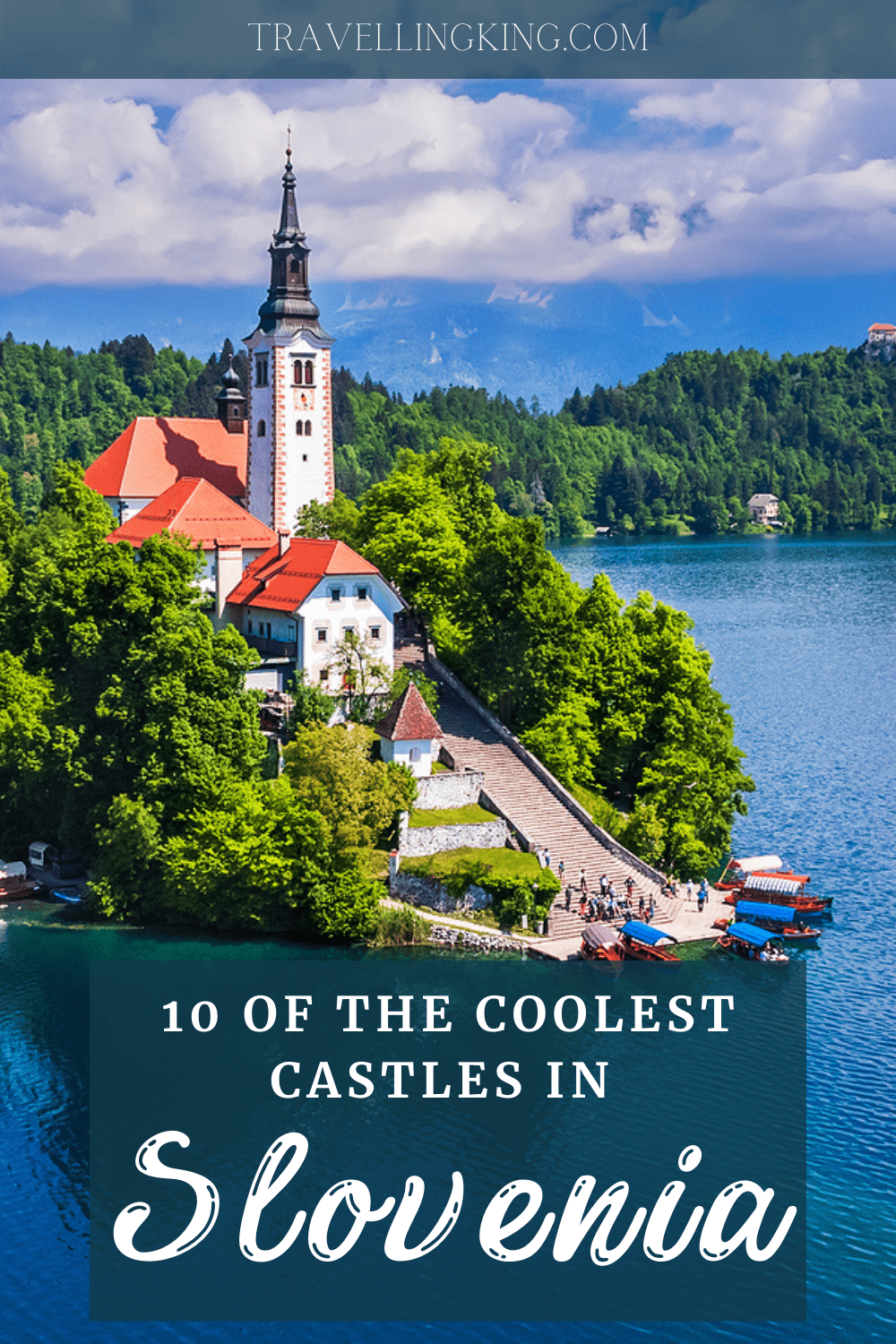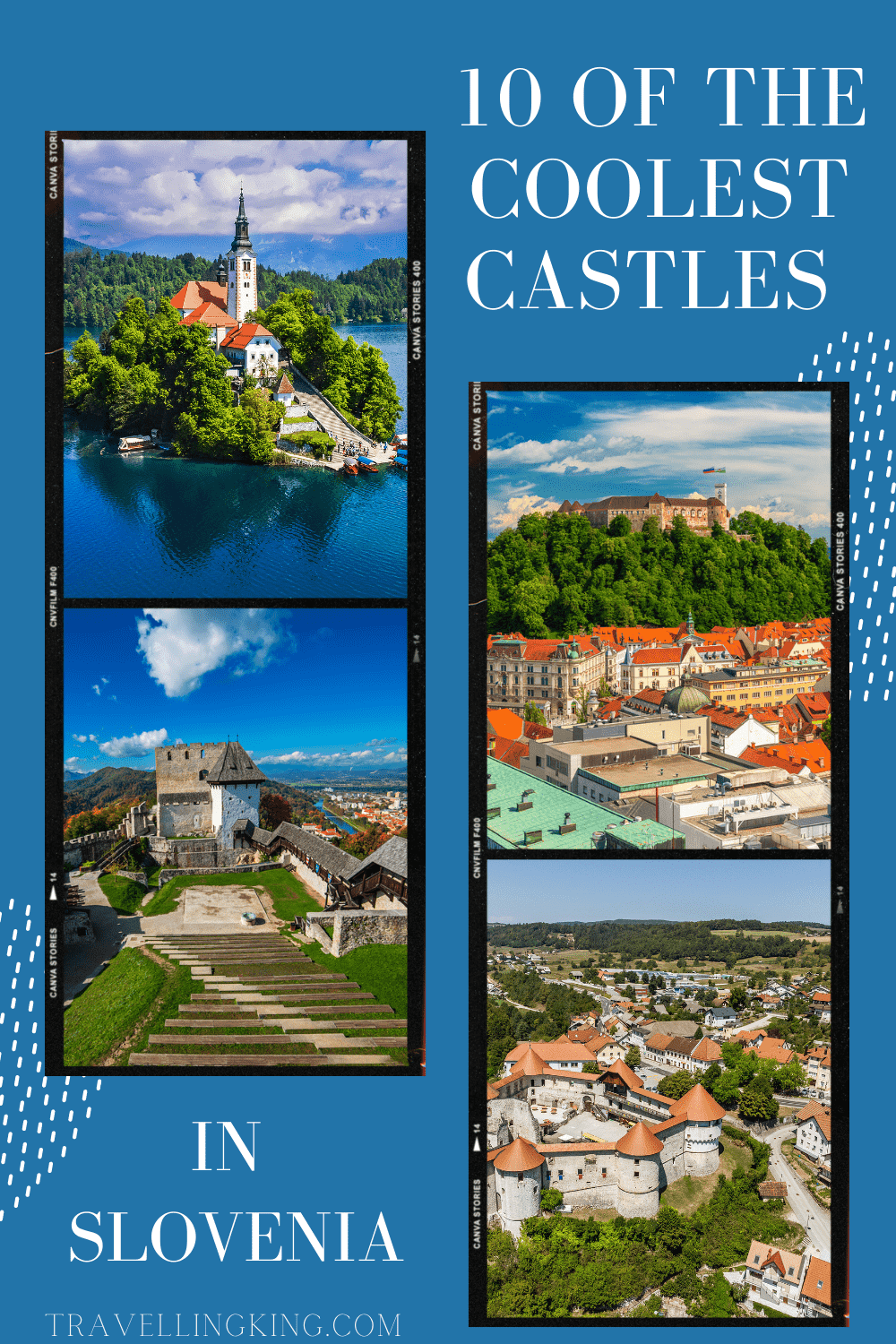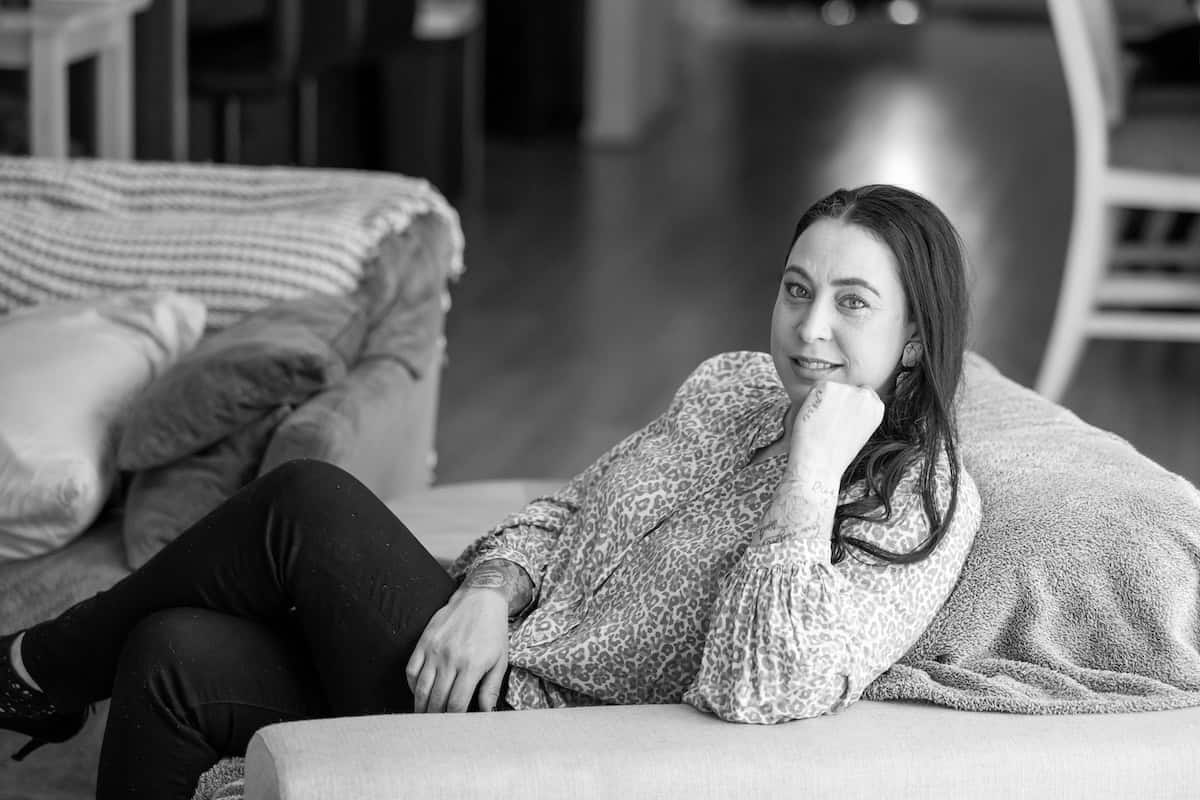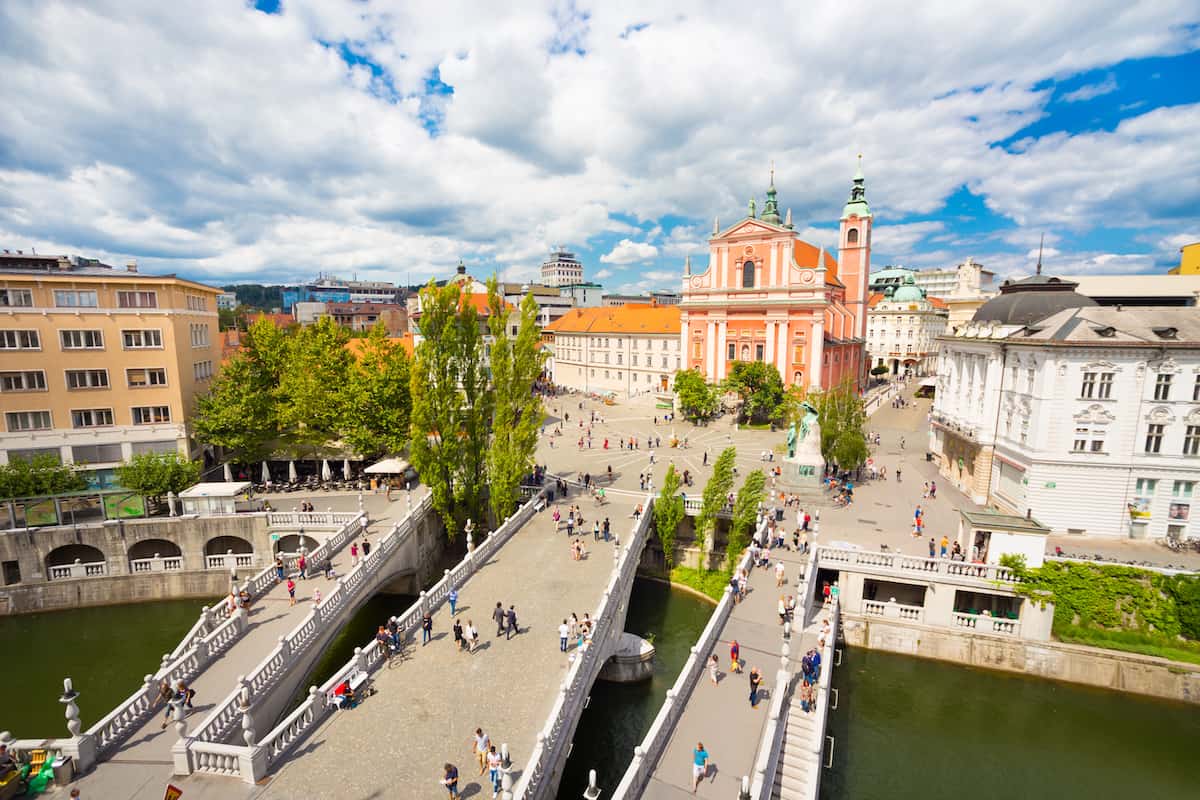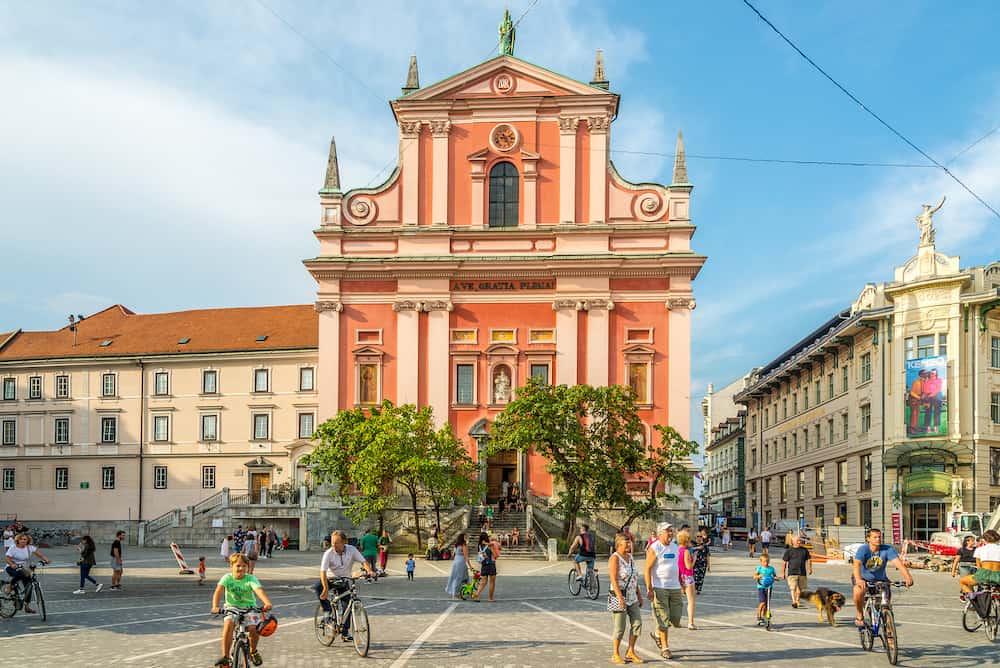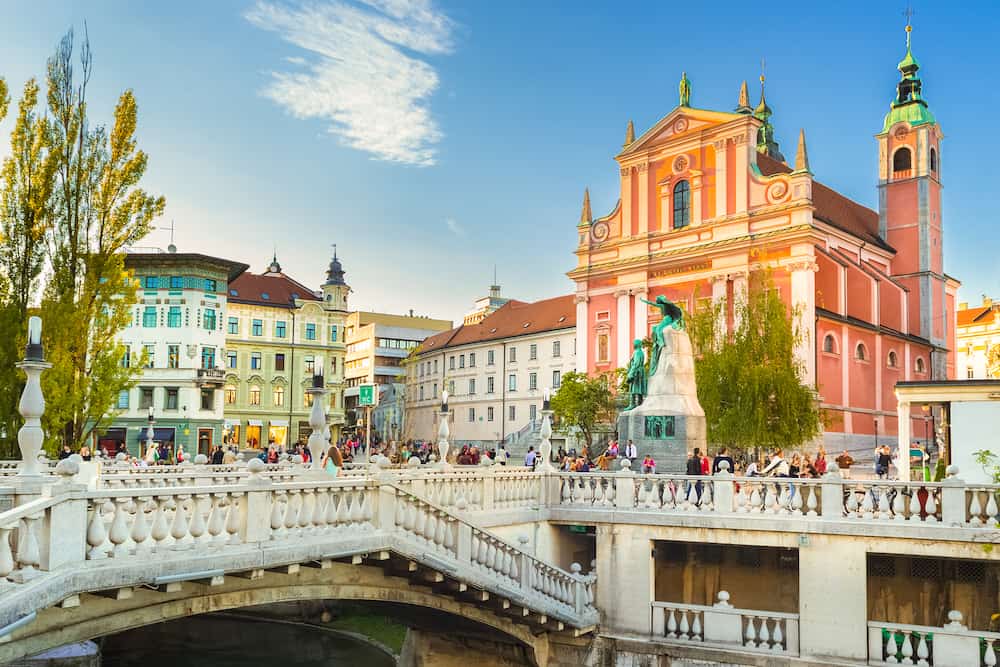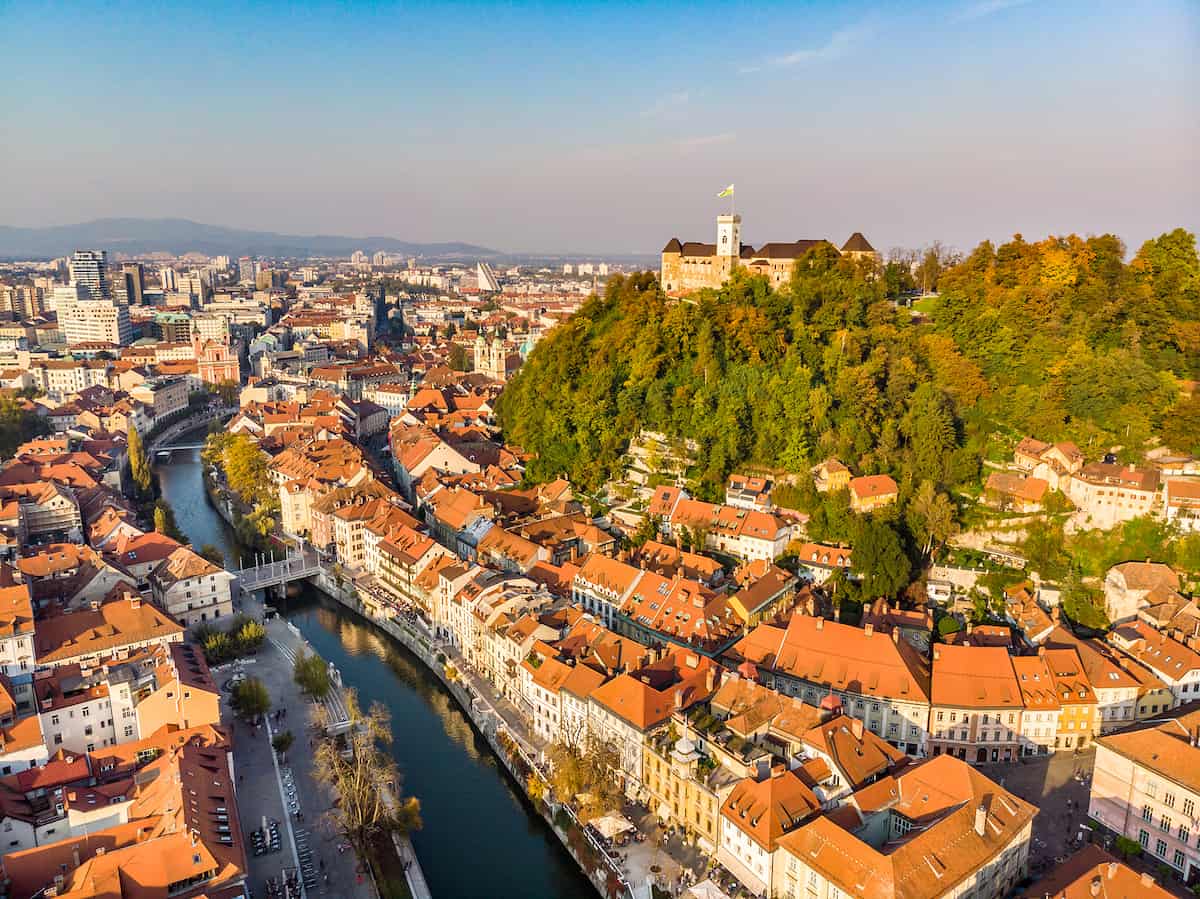10 of the Coolest Castles in Slovenia
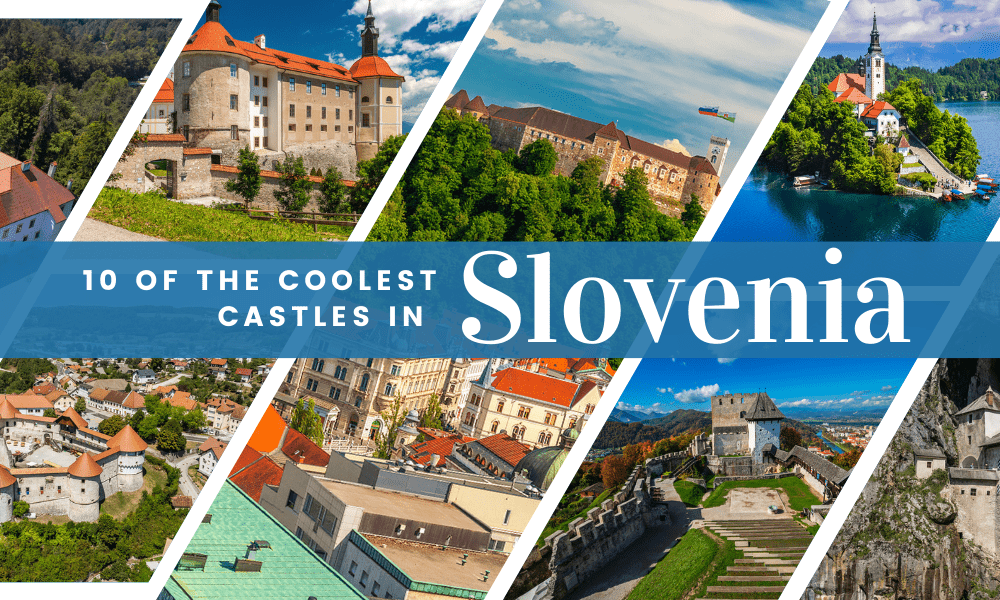
Did you know that Slovenia has over 500 castles, manors and fortresses? These medieval, Renaissance and Baroque structures represent the country’s tumultuous history, as many were built to defend against neighbouring invaders.
While some have fallen to ruins, others have been restored to their former glory and remain centrepieces of their towns and cities.
You will quickly realise that Slovenian castles are like no other, as they are far more than just historical sites and tourist hotspots.
Many castles hold regular cultural events and weddings, and offer unique activities for locals and foreigners alike.
To help plan your next adventure, peruse this helpful list of the 10 best castles in Slovenia.
Plan your trip
Save on fees abroad with the Wise Card—use it at ATMs, restaurants, and for flights or hotels in over 150 countries. Manage 40+ currencies in real-time with the Wise app.
Need Help Planning?
- Cheap Flights: Find the best deals.
- Accommodation: From hostels to luxury stays.
- Car Rental: Affordable options worldwide.
- Sightseeing Tours: Explore without breaking the bank.
- Travel Adapter: One adapter for all your needs.
- Travel Insurance: Don’t risk it—stay covered.
This post includes affiliate links. Read my full disclosure and content policy.
Ljubljana Castle
Due to its central location within the capital city, Ljubljana Castle is often one of the first attractions visitors see when arriving in Slovenia. The castle sits high above on a mountain aptly named Castle Hill, surrounded by luscious greenery.
The original fortification was likely constructed in the 11th century as a defence structure. However, the castle as it looks today was built throughout the 15th, 16th and 17th centuries. One of the oldest areas of the castle is the Chapel of St George. Originally built in a Gothic style, it was rebuilt in the mid-1700s to incorporate Baroque elements.
While the stone Viewing Tower was built in the mid-1800s, its height was increased in 1982 by 1.2 metres. Initially used for fire signalling, it now offers a beautiful panoramic view of Ljubljana. There are several other interesting towers worth checking out too, including the Erasmus Tower and the Pentagonal Tower.
Ljubljana Castle has become a regular venue for year-round cultural and social events. Some of these festivities include Friday evening jazz performances in the Rock Hall, art exhibitions, and festive Christmas fairs in the courtyard.
If you have an extra hour or you’re visiting with your family, you might like to consider participating in the Escape Castle. This escape room game is an enjoyable and engaging way to learn about the castle’s history. The Time Machine tour is another option, where a theatrical guide will lead you through the six main historical periods that best represent both the castle and the city.
If you start to feel hungry while exploring the castle, you can stop and have a bite to eat. There are two restaurants and a cafe where you can get a taste of Slovenian cuisine, as well as a wine bar and shop exclusively offering Slovenian wines from the vineyard.
Although there are many fascinating things to see and do inside the castle, the exterior grounds deserve some attention too.
Almost a decade ago, architect Jože Plečnik led the creation of a garden landscape on the site of existing fortress ruins. Take a pleasant walk along the gorgeous promenade of leafy chestnut trees leading to an unbeatable view of Ljubljana.
Opening hours for Ljubljana Castle change throughout the year, so remember to double-check before you go. To get to the castle, follow the trails to hike your way up the hill or take the funicular.
Accommodation near Ljubljana Castle:
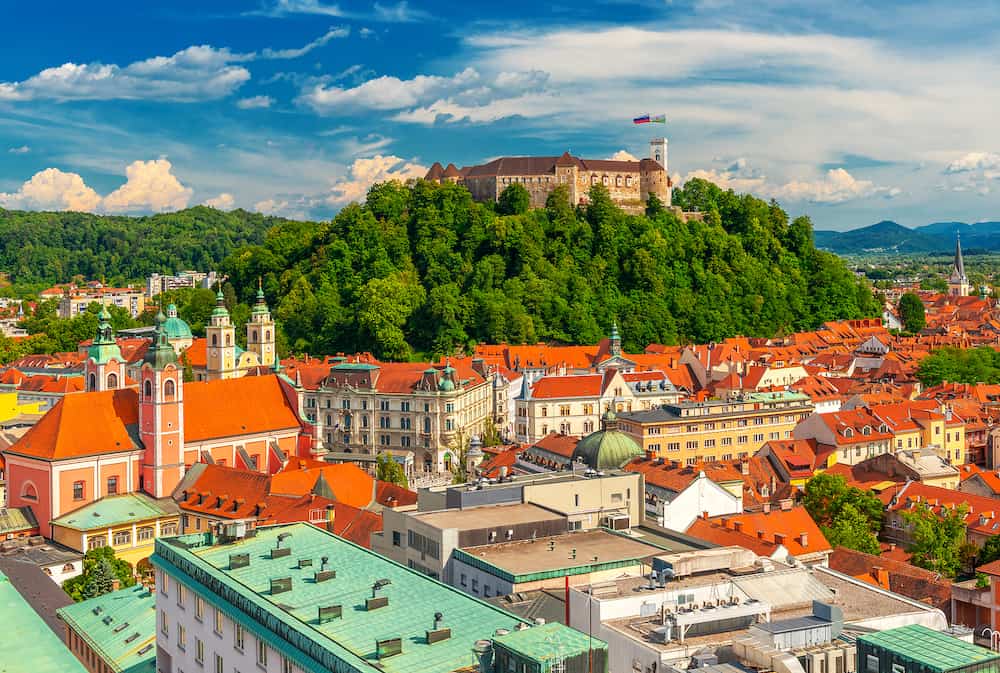
Bled Castle
Thanks to the gorgeous panoramic views across Lake Bled, Bled Castle takes the crown as the most picturesque Slovenian castle. This fairytale fortress is perched high up on a cliff 130 metres above the emerald-green waters of the lake.
Constructed here in the 11th century, it is the oldest castle in Slovenia. Due to its age, several architectural styles can be seen, from the Romanesque tower to the Renaissance walls.
Reaching the castle requires walking up 99 steps. At the top, you can stop and admire the surrounding Karavanke Mountains from the upper courtyard. Here you will find the entrance to the 16th-century Gothic chapel. This angelic space is adorned with pink and blue Baroque frescoes from floor to ceiling.
The permanent museum exhibition at the castle is curated by the National Museum of Slovenia and comprises eight main themes and elements that bring together the region’s history and culture. The exhibition begins by covering the geology of the area, dating back to the Ice Age and the creation of the Bled basin.
Next is a section on prehistoric European inventions, many of which were linked to fire. You’ll then learn about the spiritual culture of the region, the journey of pilgrims during the Middle Ages, and how Bled became famous throughout Europe as a spa location during the 19th century.
Once you’ve explored the museum and the chapel, there is still plenty left to see and do here. Visit the castle printing works, admire the works of art at Gallery STOLP, purchase some souvenirs from the Beehouse boutique gift shop, go wine tasting in the castle cellar, and sip some iced tea at the coffee shop.
There are numerous transport options to get to Bled, including walking, cycling, taking a bus or a car, and even riding in a pre-arranged horse-drawn carriage. Tickets and updated opening hours are available on the official Bled Castle website.
Accommodation near Bled Castle:
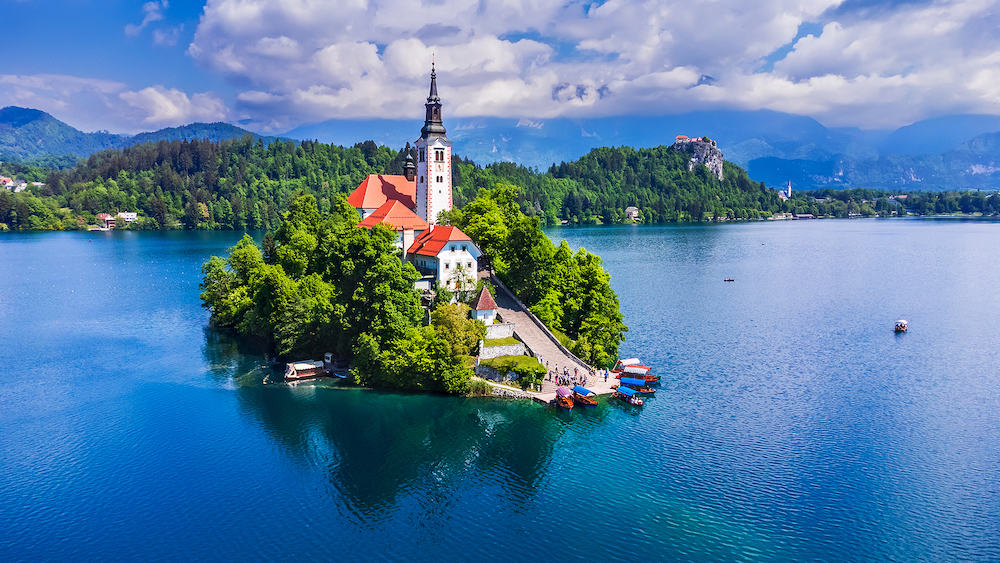
Predjama Castle
Predjama Castle is known for being the most extensive cave castle in the world. This must-see Renaissance structure was built right into the side of a 123-metre-high cliff in Predjama, 11 kilometres from the town of Postojna in the southwest of Slovenia.
While the first mentions of a cave castle here date back to the 1200s, the mediaeval marvel you see today was mostly built during the 16th century. The sheer beauty and innovation of Predjama Castle have inspired numerous filmmakers and artists, including Game of Thrones author George R. R. Martin.
Inside, you’ll be able to walk around and see the castle’s armoury, torture chamber, chapel and kitchen, as well as collections of medieval weapons. Joining a tour is highly recommended so that you can learn interesting facts and a few myths and legends along the way.
The karst cave beneath the castle spans four floors and is home to a colony of bats during the winter. These secret tunnels were once inhabited by humans during the Stone Age, later becoming an invaluable hiding place.
Although the entire length of the tunnels reaches 14 kilometres, most visitors typically walk a 700-metre stretch. Yet, this is plenty long enough to see the Main Passage, the Great Hall, the Cave of Names, the Stables and the Fiženca, which leads to the surface.
For those seeking even more adventure, additional tours are available through other areas, including Erazem’s Passage, the Wind Hole, Luka Čeč, the Coloured Passage, and the nearby Postojna Cave.
While you can visit the castle year-round, the cave is only open between May and September to leave the bats to their hibernation. Tour schedules and opening hours change throughout the year, so check in advance and plan accordingly.
Accommodation near Predjama Castle:
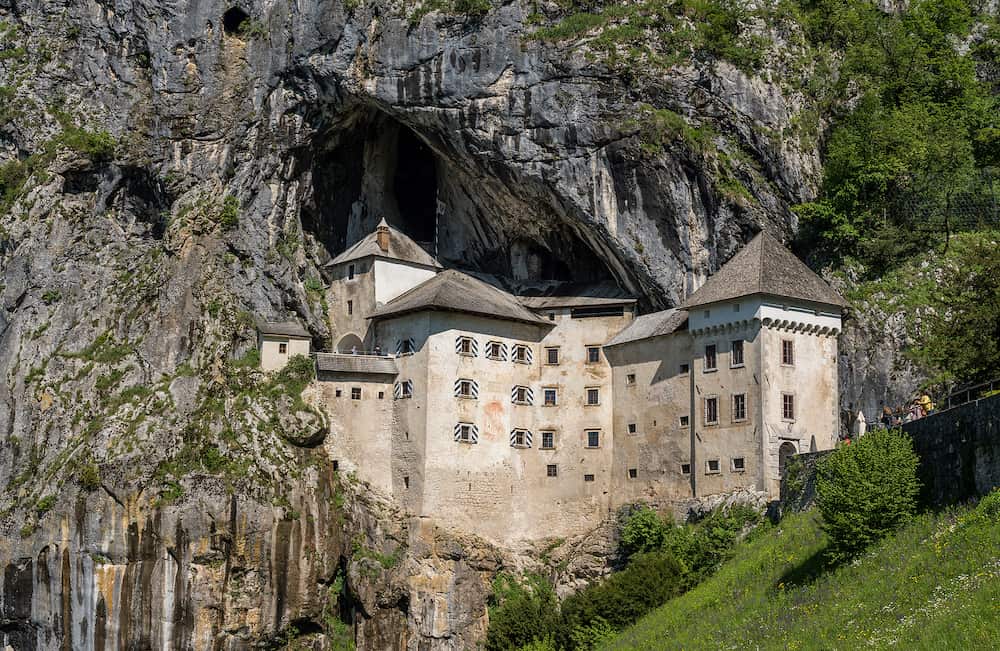
Žužemberk Castle
Head about 50 kilometres southeast of Ljubljana and you’ll come across the charming Žužemberk Castle. From the bridge crossing the Krka River, there is a gorgeous view looking up at the castle on top of the cliff.
The castle’s chapel was first built in 1046, with the surrounding village developing shortly after. The Renaissance structure was fortified in the 1500s, and seven new round defence towers were built. In 1538, the land was purchased by the noble Auersperg family, who would control Žužemberk for centuries and develop the town’s steel industry.
In World War II, the castle was set ablaze by guerillas and has been undergoing reconstruction since the 1960s. There is no entrance fee, so you can wander around freely and see some of the ruins, as well as the areas that have already been preserved.
During the summer, open-air concerts and plays are held in the inner courtyard. If you plan to be in Slovenia during July, be sure to come to Žužemberk while Market Town Days is on. This annual two-week-long cultural festival is one of the busiest and most exciting events in the Lower Carniola region.
Buses from Ljubljana Bus Station depart for Zuzemberk multiple times per day and take a little over an hour.
Accommodation near Žužemberk Castle:
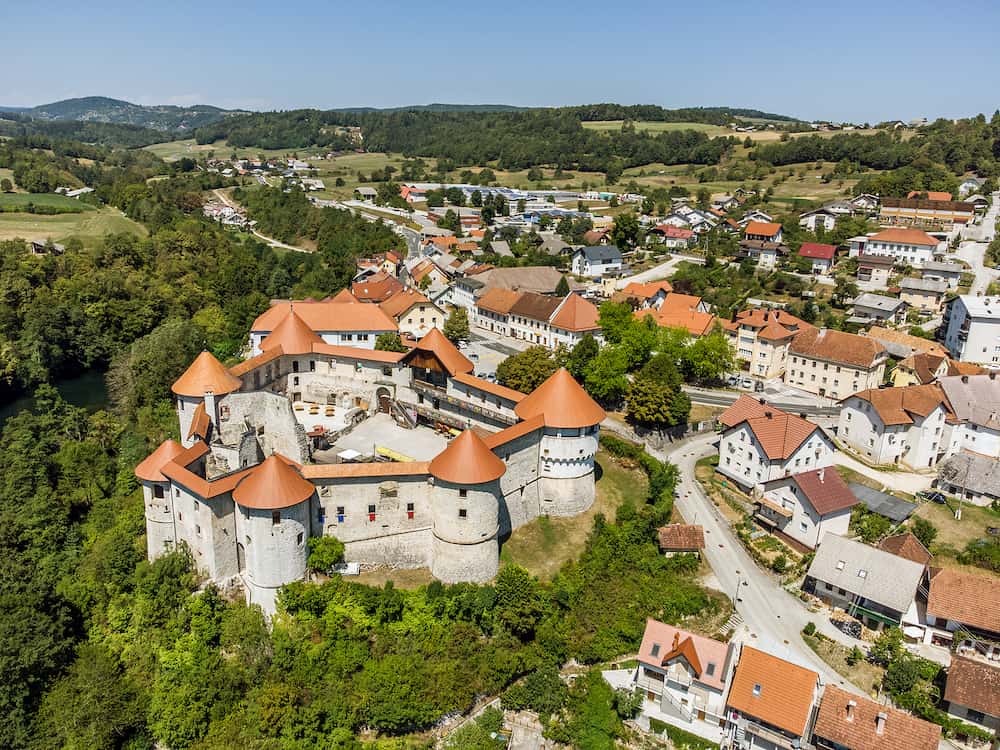
Škofja Loka Castle
The incredible Škofja Loka Castle is only 25 kilometres from the centre of Ljubljana. With a gorgeous green backdrop of Krancelj Hill, this imposing beauty is the crowning jewel of Škofja Loka.
Although the fortress was first mentioned in the early 1200s, the current structure was built in the 16th century. Like many other castles dating back hundreds of years, there have been several reconstructions over the centuries. The oldest part of the castle is the northeastern tower.
Since opening in 1959, the Škofja Loka Museum has become one of Slovenia’s best-curated cultural, historical and ethnological showcases.
You’ll find the main Castle Gallery here too, while the Ivan Grohar and France Mihelič galleries are located in the town centre. There’s also an open-air museum with a mediaeval farmhouse, hayrack and mill.
Some of the fascinating collections at the museum include:
- The Archaeology Collection, presenting finds from the Škofja Loka area, ranging from the Palaeolithic era up to Late Antiquity
- The Vernacular Architecture Collection, sharing methods of cooking used before electricity
- The Skilled Trade Collections, showcasing different processes, tools and materials from the Middle Ages such as lacemaking
- The Medieval Art Collection, containing stunning replicas of Gothic frescoes from nearby churches
- The Natural History Collection, displaying the diversity of native animals in the region
The Castle Chapel is worth a look too, with four golden Baroque altars and four gilded wooden altars with intricate carvings. On the dome and walls are impeccable biblical frescoes that were painted during World War II.
With so much to see and learn here, Škofja Loja makes for a wonderful day trip from Ljubljana. Guided tours and workshops for both kids and adults are offered too. You can check the different opening hours and entrance fees for the castle and the galleries on the museum’s website.
There are buses to Škofja Loja departing from Ljubljana’s main bus station every 30 minutes, making it convenient to get there and back at any time of the day.
Accommodation near Škofja Loka Castle:
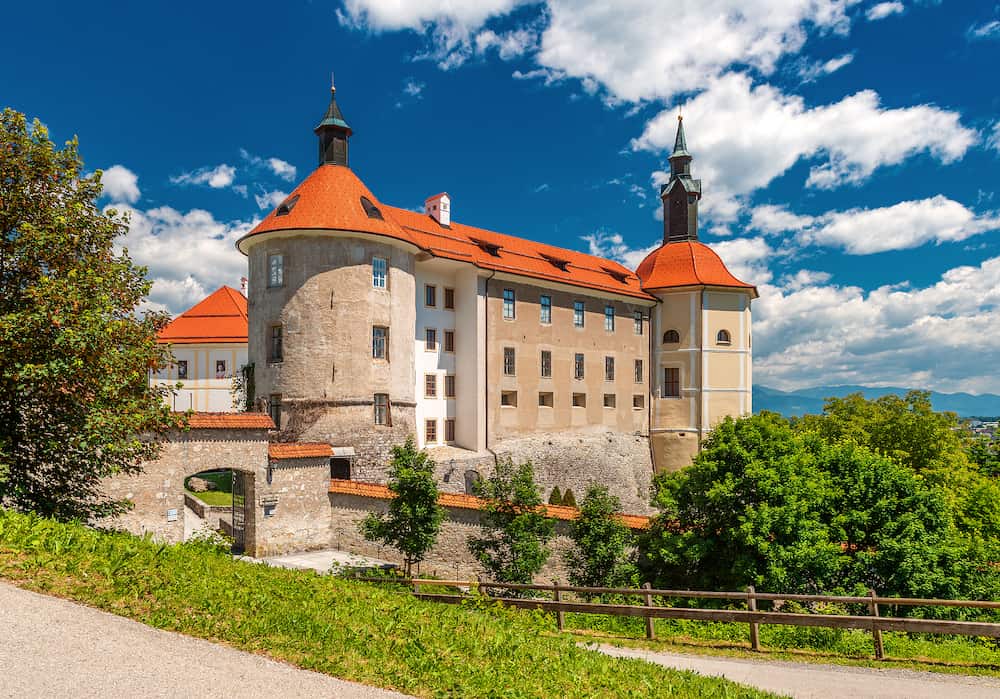
Bogensperk Castle
16th-century Bogensperk Castle is located in central Slovenia, about 45 kilometres east of Ljubljana. Sitting more than 400 metres above sea level, the white Renaissance building consists of three storeys with four towers on each side and an inner courtyard.
Bogensperk is an important cultural monument. Historian and polymath Janez Vajkard Valvasor wrote his famed work, Glory of the Duchy of Carniola, while living here.
His library once stored thousands of books and more than 8,000 graphic sheets from local and international artists. This led to the creation of the Graphic Institute, the first of its kind in Carniola. Requiring his own studio and printing press, Valvasor is responsible for bringing copper plate engraving and printing to the region.
Now completely renovated, the castle functions as a museum. The exhibitions and collections here include traditional folk costumes, witchcraft and superstitions, surveying and mapping, and geological surveys of the area.
The opening hours and days change seasonally and are updated on the official website. Guided tours and creative workshops are available. Getting here via public transit can be a little tricky, so it’s best to arrive by car.
Accommodation near Bogensperk Castle:
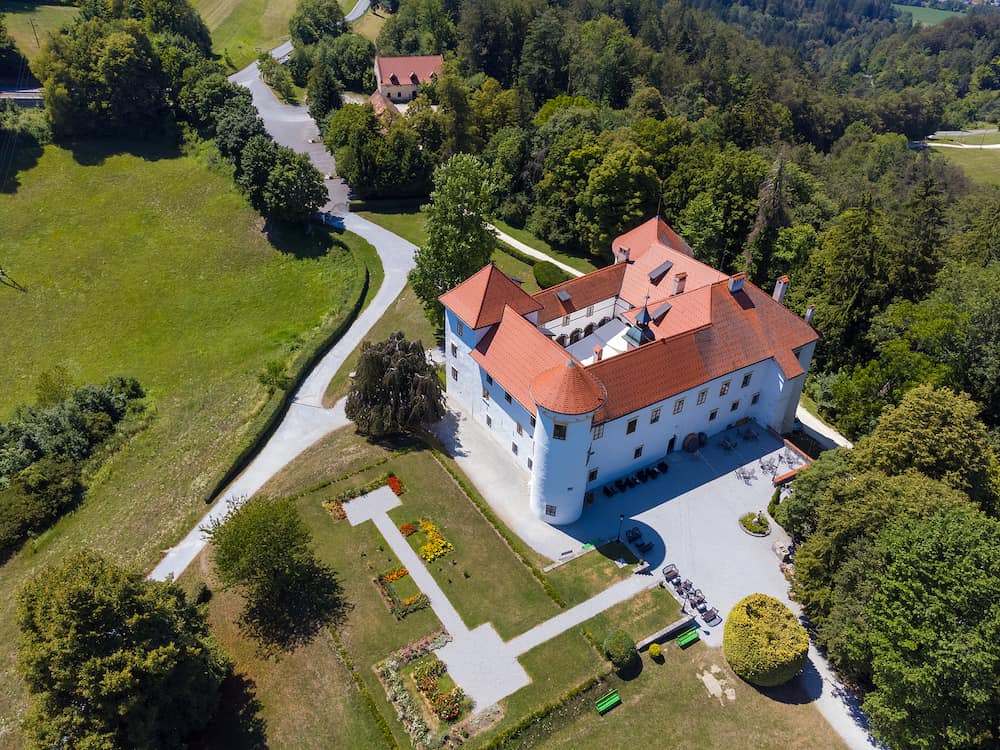
Otočec Castle
One of the most serene castles in Slovenia is found on a small island along the Krka River. While the Otočec Castle dates back to the mid-13th century at least, its origins remain shrouded in mystery. Two wooden bridges link the island to the northern and southern banks, with parking available at the northern entrance.
This former home of army generals and knights is now a luxury boutique hotel. The Gothic-Renaissance structure is surrounded by luscious greenery, creating a beautifully romantic setting ideal for a lovers’ getaway.
The property also boasts a golf course, a boat house, a spacious garden, and an adventure park with a ropes course.
The Otočec Castle Restaurant sources organic ingredients from the castle’s garden and other nearby farms to create unique, hearty dishes. Open from Wednesday to Sunday from noon until late, guests can select from carefully curated three-course or five-course menus.
To get to Otočec, it’s easiest to drive yourself. The trip from Ljubljana will take you under an hour.
Accommodation near Otočec Castle:
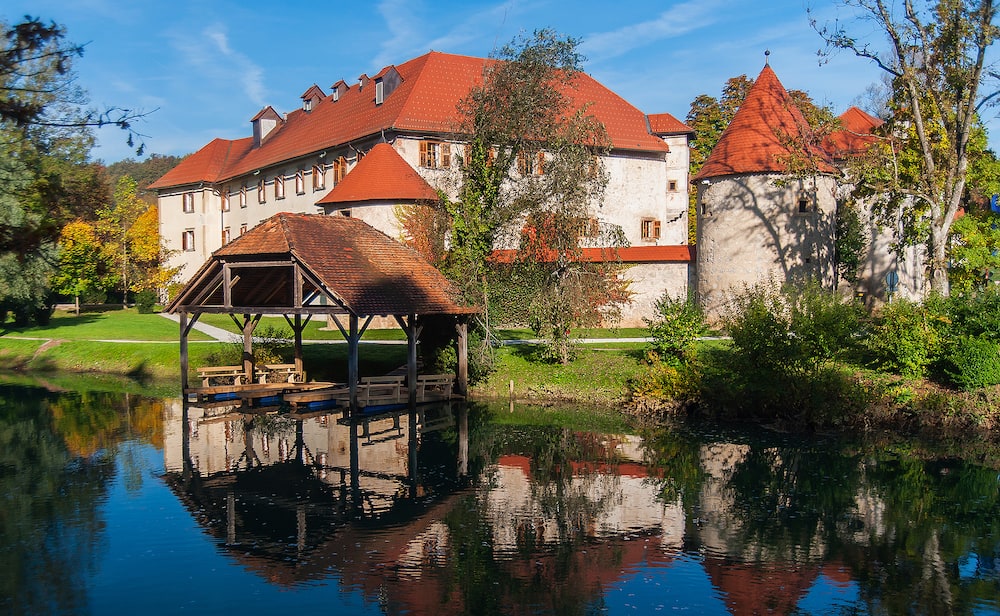
Celje Castle
Yet another mediaeval gem offering incredible sweeping views is Celje Castle. A train from Ljubljana to Celje will take about an hour and a half, give or take.
The earliest known references to Celje Castle date back to 1322, when it was once considered the largest fortress in the Eastern Alps.
Built atop a 400-metre-high hill, the castle overlooks Celje, the third-largest city in Slovenia, as well as the Savinja River. While the walk up the hill takes about half an hour, it’s undoubtedly worth the effort.
By the 1700s, the complex had deteriorated significantly, and restoration finally began in the mid-1800s. After fortifying the walls, the structure was enhanced with Baroque and Renaissance elements. Although significant improvements have been made, the grounds are still being restored to this day.
Regular open-air concerts and mediaeval festivals are held here during the summer. If you’re interested, check the official website ahead of time to see if any events coincide with your visit to the city. Since it’s also a popular wedding venue for Slovenes, you may even run into a happy couple celebrating their big day.
While the castle doesn’t have a museum, you’ll be able to find a tourist centre with souvenirs. Before leaving, stop by Cafe Veronika for a cup of coffee or a cold cocktail during the summer.
Accommodation near Celje Castle:
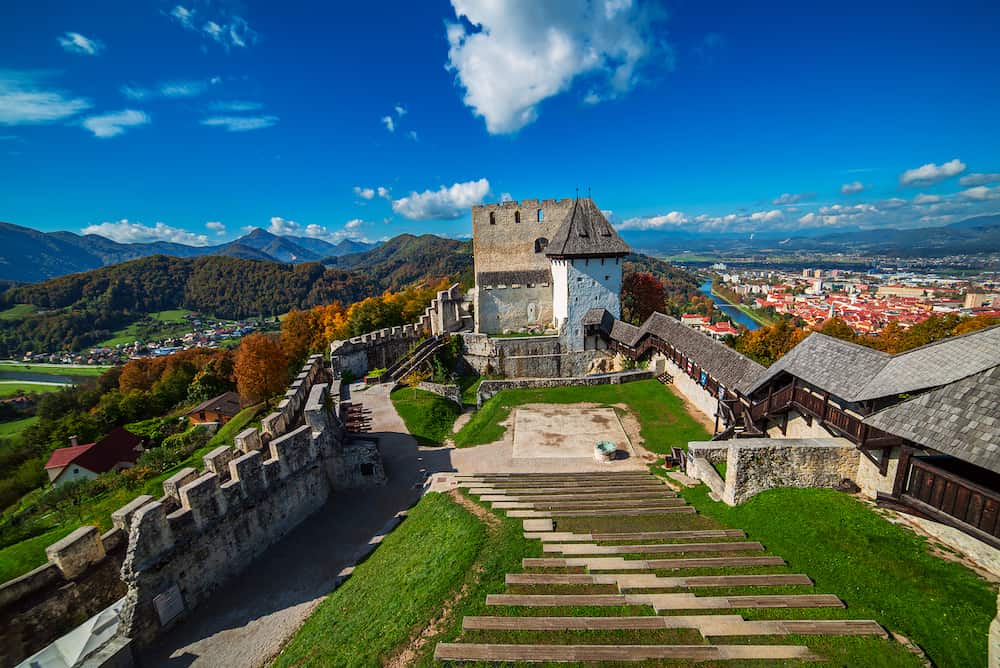
Sevnica Castle
In the Lower Sava Valley, Sevnica Castle sits on a hill overlooking the old town. The first record of the castle was made in 1309, and it was owned by the Archdiocese of Salzburg until 1803. A Lutheran cellar was built in the mid-16th century to store wines made using the grapes from the surrounding vineyard.
For decades, the castle was neglected and most of the original furniture vanished. In the 1960s and ’70s, the cellar and its frescoes were restored. 17th-century Baroque paintings of the four seasons were also uncovered in the southeast tower.
The only way to enter the castle is with a guide, so a night tour is highly recommended. During this unique experience, you’ll wander the candlelit halls with a lantern as you learn the history of the castle and the life of its most recent proprietress, Countess Mathilde Arco Zinneberg.
There are several rooms you’ll be able to see, including the Baroque salon, the puppet theatre, the former castle dungeon, and gallery rooms containing works by local artists.
Trains from Ljubljana to Sevnica take about an hour and 20 minutes. The walk to the castle from the station is less than half an hour, or a taxi can take you there within five minutes.
Accommodation near Sevnica Castle:
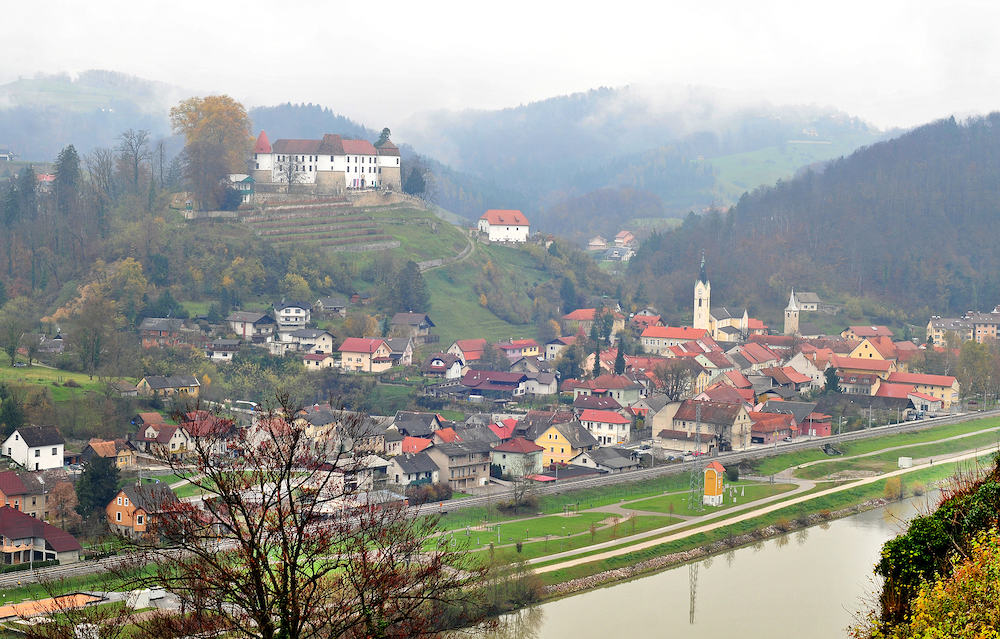
Bistrica Castle
Bistrica Castle is an astonishing Renaissance and Baroque palace in the small town of Slovenska Bistrica. It has been home to various kings, counts and aristocrats, each of whom added their own touches and extensions.
The first castle was built on a farm in the early 1300s, burning down before the century was over. The rebuilt palace then endured sieges and invasions from the Hungarian and Turkish Empires.
One of the notable features is the trapezoidal courtyard with a two-storey Tuscan portico. Also worth looking out for are the Baroque frescoes inside the Knights’ Hall and the chapel, which were painted in the 1700s by Franz Ignaty Flurer.
The palace is now in the hands of the Cultural Institute of Slovenska Bistrica. The institute organises different tours and experiences throughout the year. Visitors can view several permanent and temporary exhibitions, and check out the castle’s wine shop and kitchen.
Bistrica is about 20 minutes south of the city of Maribor, and just over an hour-long drive from Ljubljana.
Accommodation near Bistrica Castle:
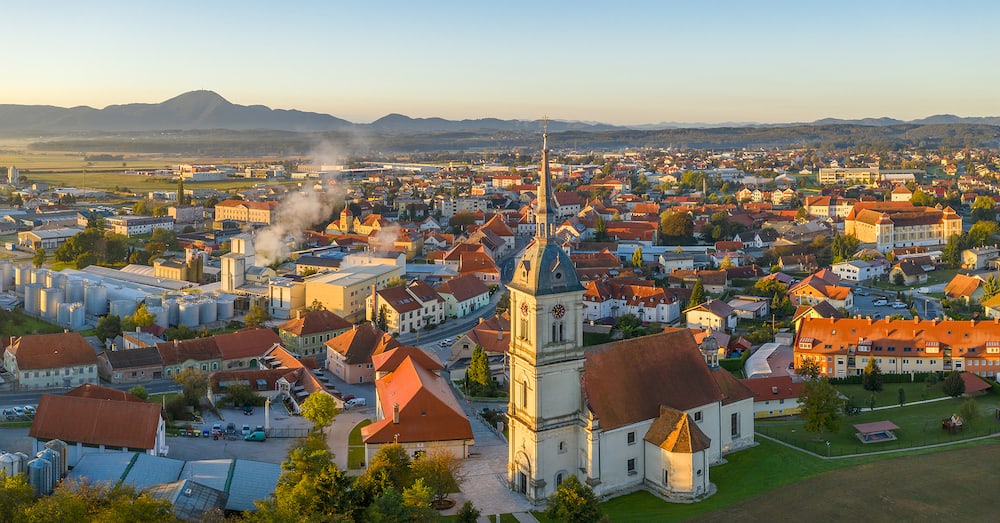
If you’d like to save it for later, please save it to Pinterest.
